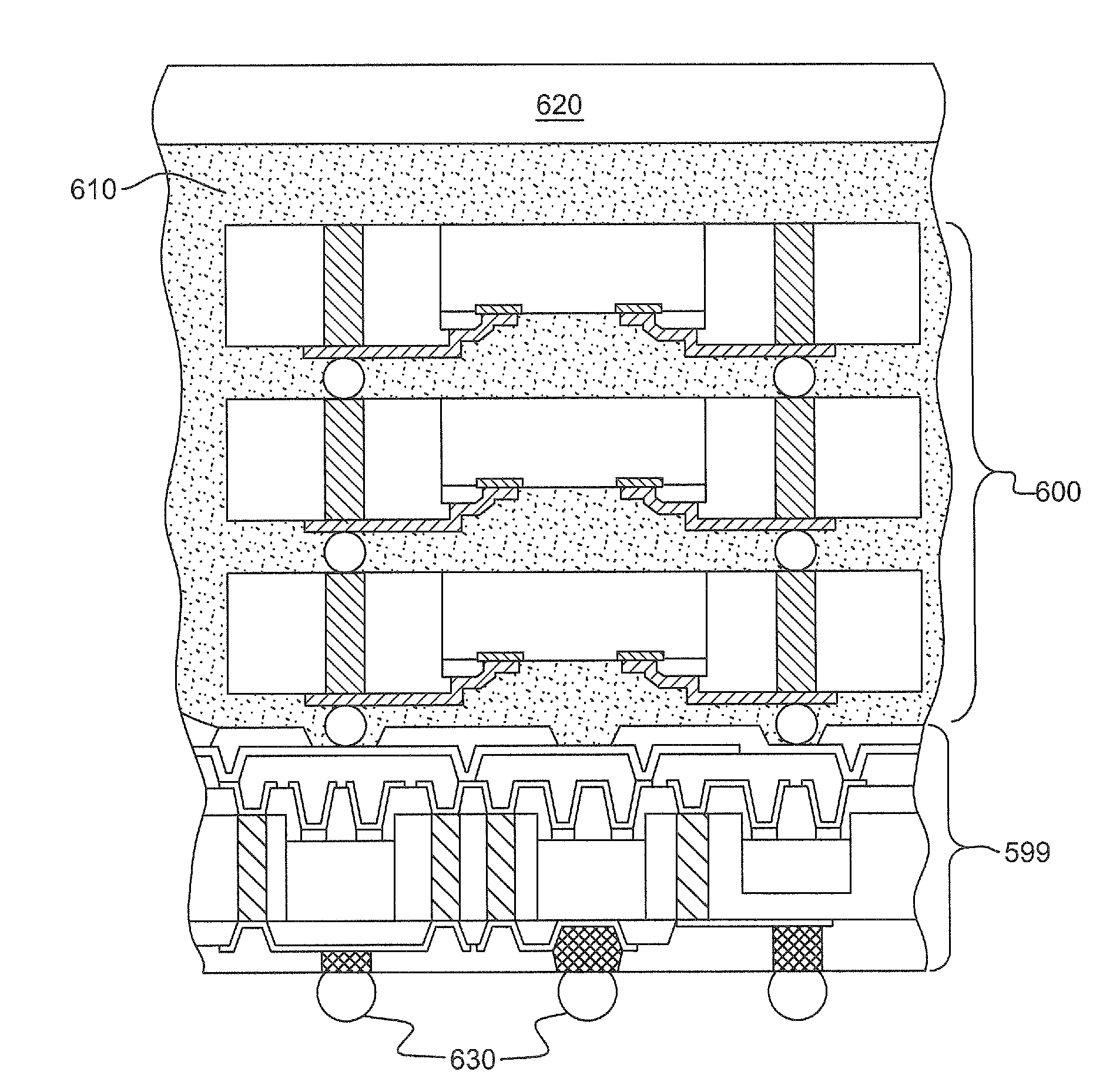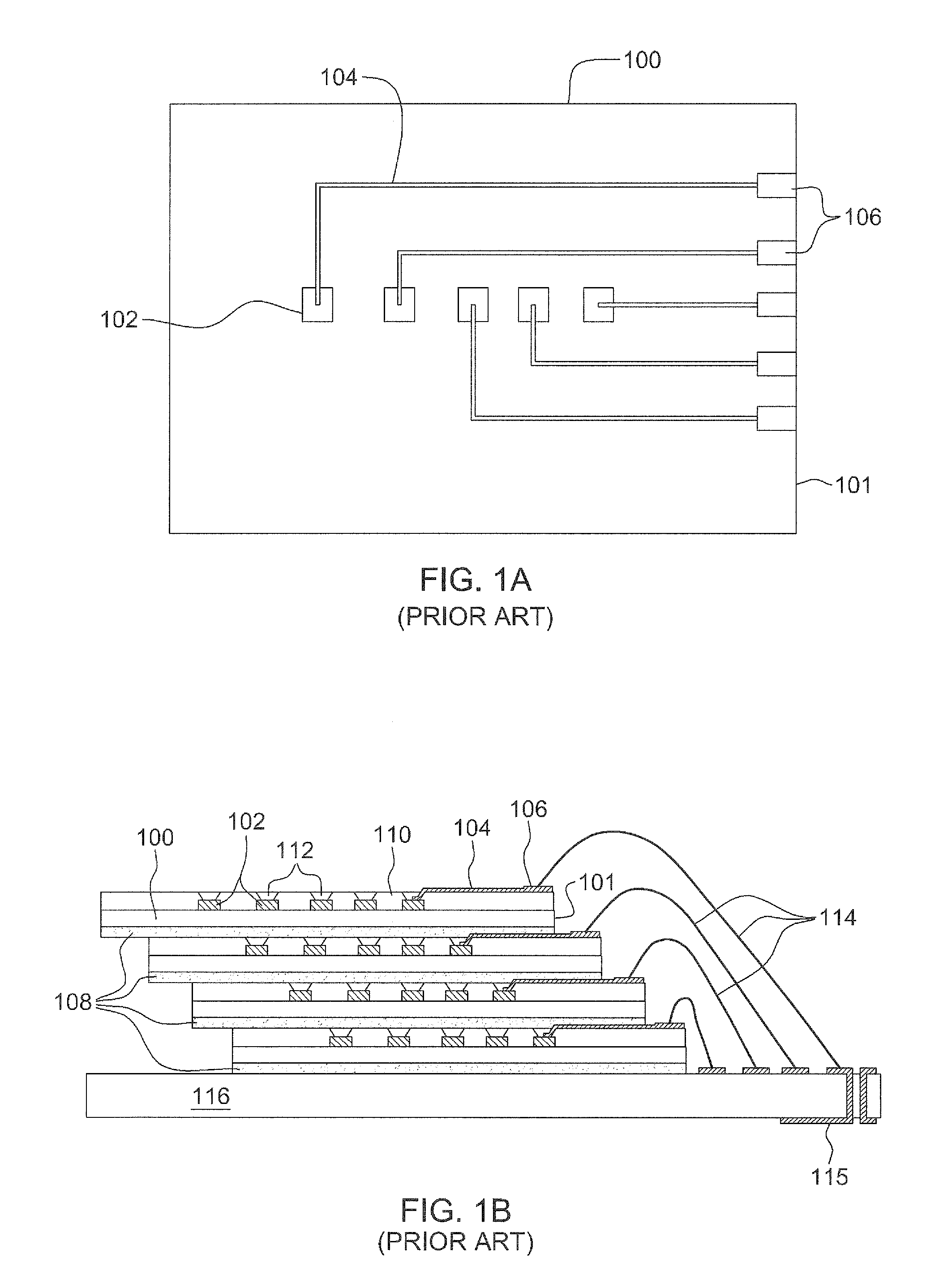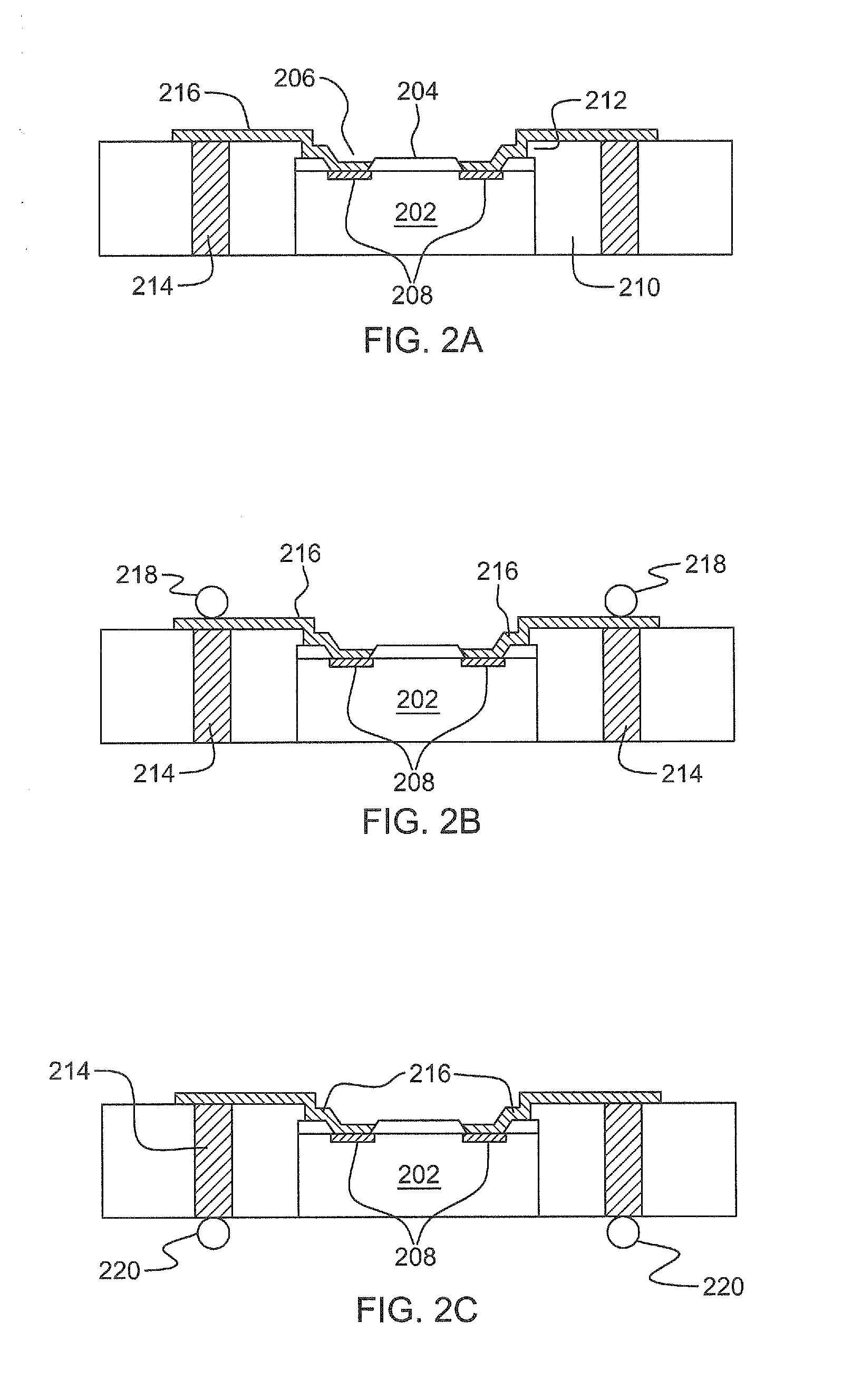Stackable circuit structures and methods of fabrication thereof
a technology of stackable circuits and circuit structures, applied in the direction of electrical equipment, semiconductor devices, semiconductor/solid-state device details, etc., can solve the problems of speed, and the conventional limit of process speed, and achieve the goal of providing electronic packaging and interconnects which provide maximum performance. , the problem of speed and size and interconnect density
- Summary
- Abstract
- Description
- Claims
- Application Information
AI Technical Summary
Benefits of technology
Problems solved by technology
Method used
Image
Examples
Embodiment Construction
[0050]Generally stated, provided herein are numerous enhancements to multichip modules, and in particular, to chips-first circuit structures. Advantageously, described herein in one aspect are structures and fabrication methods for a chips-first circuit structure, or electronic module, wherein a first level metallization is applied directly to the front surface of the chips-first layer, without first applying a dielectric layer over the chips-first layer. Further, provided herein are structures and methods of fabrication which provide a chips-first circuit structure with a fan-out metallization from the chip pads, where lithography steps are minimized, and only one lithography step is used for the fan-out metallization. The structures and methods of fabrication described herein provide interconnect to a tight pad pitch, such as associated with today's integrated circuit chips, without the propensity for shorting to adjacent pads. This is accomplished by using (for example) the exist...
PUM
 Login to View More
Login to View More Abstract
Description
Claims
Application Information
 Login to View More
Login to View More - R&D
- Intellectual Property
- Life Sciences
- Materials
- Tech Scout
- Unparalleled Data Quality
- Higher Quality Content
- 60% Fewer Hallucinations
Browse by: Latest US Patents, China's latest patents, Technical Efficacy Thesaurus, Application Domain, Technology Topic, Popular Technical Reports.
© 2025 PatSnap. All rights reserved.Legal|Privacy policy|Modern Slavery Act Transparency Statement|Sitemap|About US| Contact US: help@patsnap.com



